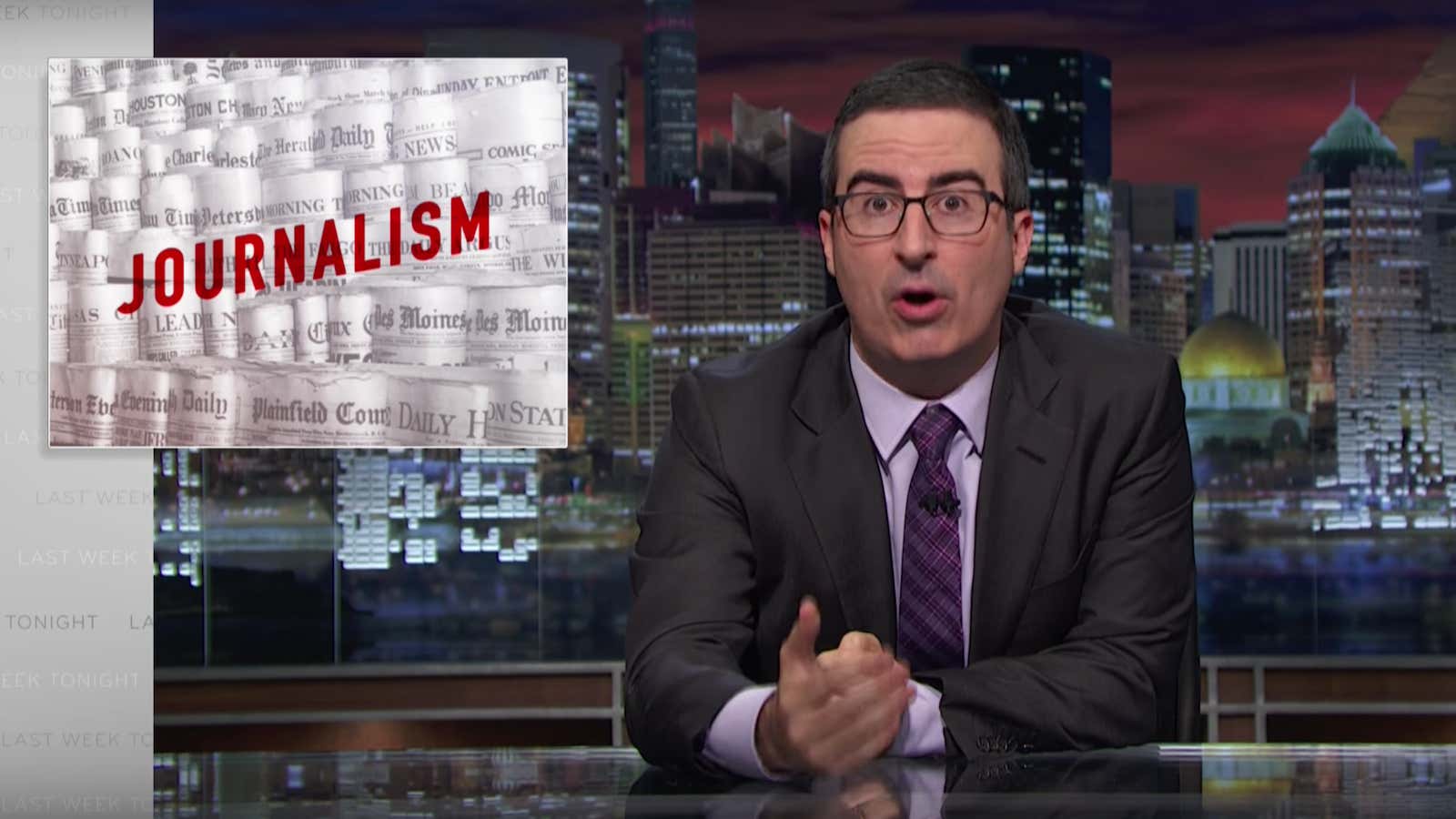Holding any confidence in the future of newspapers, John Oliver explained, is ”like a citizen of Pompeii saying, ‘what I love about this city is how volcano-proof it is. Not a year goes by without us not having to have our horrified reactions captured in ash forever.'”
Still, the comedian and late-night host made a deft case for the value of the local and investigative news reporting that was traditionally done by newspapers, on Sunday (Aug. 7). In HBO’s Last Week Tonight with John Oliver, he delivered a scathing chronicle of journalism’s decline in the US, explaining how dependent online and broadcast media—his show included—are on the efforts of local news outlets:
“The media is a food chain which would fall apart without local newspapers,” Oliver said in the segment. He showed how heavily TV news and other media outlets lean on publications such as the Oregonian and the Boston Globe for stories. ”Without newspapers around to cite, TV news would just be Wolf Blitzer endlessly batting a ball of yarn around,” Oliver said, referring to CNN’s longtime anchor.
Unfortunately, as Oliver points out, many of these local newspapers are also coping with declining revenues. They’re forced to slash newsroom staffs in critical beats like state government and create cultures that prioritize clickbait over quality journalism. In one widely ridiculed example, Tribune Publishing, a 150-year old newspaper brand, recently rebranded as tronc (paywall), an acronym for ”Tribune online content.” The legacy media company’s new vision for the future is chock-full of meaningless jargon and baffling infographics that make it sound more like a pointless tech startup than an essential news outlet.
Other renowned newspapers, including most recently the New York Times, are also pivoting away from the local stories they were built upon, and looking instead toward broader coverage that appeals to an international audience. The Times’ public editor, Liz Spayd, said on Saturday that the paper’s Metro desk would eschew community stories—like a recent one about a fire in the Bronx that killed two toddlers—and focus instead on broader narratives such as race and policing, or inequality.
Who will tell those important local stories then? Can sites such as DNAinfo, which covers New York and Chicago, pick up the slack? Will it fall to hyperlocal blogs with small staffs such as the Mott Haven Herald and Bensonhurst Bean? Or will social media become the main source for neighborhood news?
Whatever the future will look like, Oliver says readers who are accustomed to getting news for free will shape it. “Sooner or later, we are either going to have to pay for journalism or we are all going to pay for it,” Oliver said. Without reporters at local government meetings, the TV writer and former journalist David Simon’s predicts, there will be nothing to check the behavior of government officials: “The next 10 or 15 years are going to be a halcyon era for state and local political corruption,” Simon says in a clip Oliver plays. “It is going to be one of the great times to be a corrupt politician.”
The segment concludes with a skit, ”Stoplight,” that spoofs the Academy Award-winning investigative journalism drama Spotlight, presenting a future in which over-burdened reporters have their serious ideas subsumed by coverage of viral “raccoon-cats.” One newspaper in the skit described the depiction as ”depressingly accurate.” Another newspaper explains, “Actually, we had to get rid of our full-time movie reviewer nine years ago… So we haven’t seen it yet.”
Sadly, that’s not far from where newsrooms are today.
